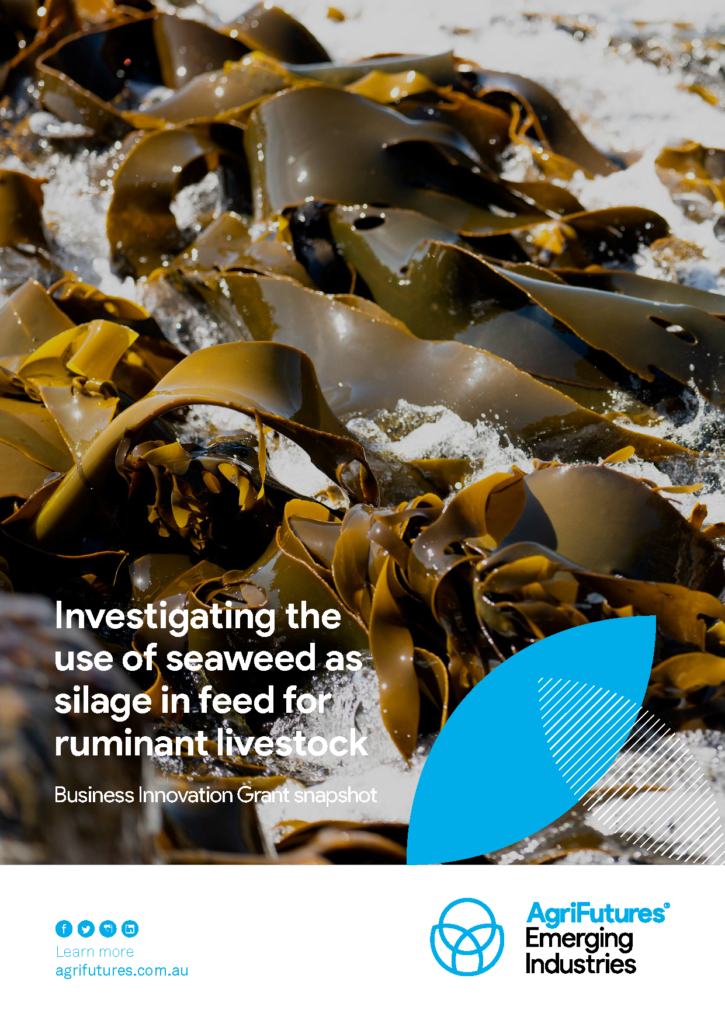Biosecurity for the Australian seaweed industry
The Australian seaweed industry has a vision to be a $1.5 billion industry by 2040, driven by increasing demand for sustainable food, bioactive compounds and...
 SEAWEED AND ALGAE
SEAWEED AND ALGAE 
6 pages
Published: 4 Mar 2024
Author(s): Jane Stanley
Download report PDF
DownloadThis project sought to build the business case and potential market for farmed seaweeds that can be used within pasture-based livestock systems, as a silage admix. Currently, beef and dairy producers in southern Australia are moving to increase their use of silage as a year-round fodder supplement, and this medium provides a convenient delivery mechanism.
The initial project methodology was based around sourcing seaweed as feedstock for making silage, testing a methodology for making silage and assessing the nutritional value of the end product. However, difficulties were encountered in sourcing seaweed feedstock and practical problems emerged related to making silage from seaweed.
The research determined there would not be a market for farmed seaweed as a feedstock for making silage, as it is not an affordable option given the cost of production and competition from the nutraceuticals industry.
Further, sourcing wild-harvested seaweed and processing this to make silage does not appear to be practical for farmers, given the necessary equipment and high labour costs involved. However, there are potential opportunities for harvesting seaweed from areas where it is a nuisance with adverse ecological impacts, and processing this to manufacture other farm inputs.
Emerging new evidence from other research has also demonstrated ensiling seaweed would not provide the hypothesised nutritional advantages if used as livestock fodder.